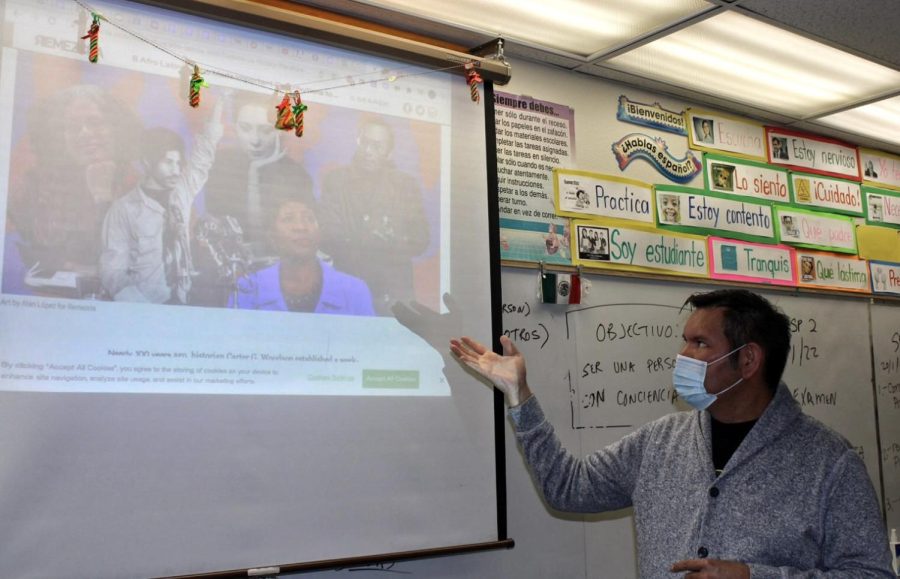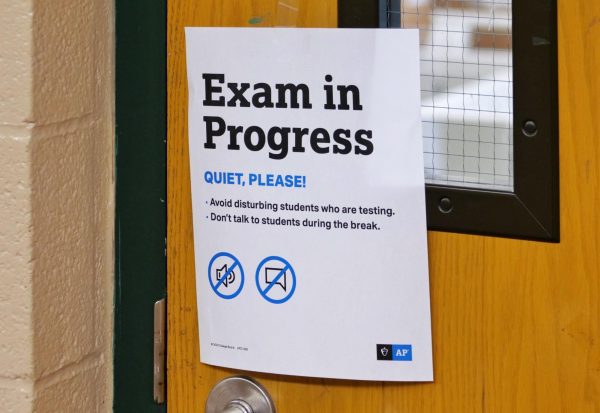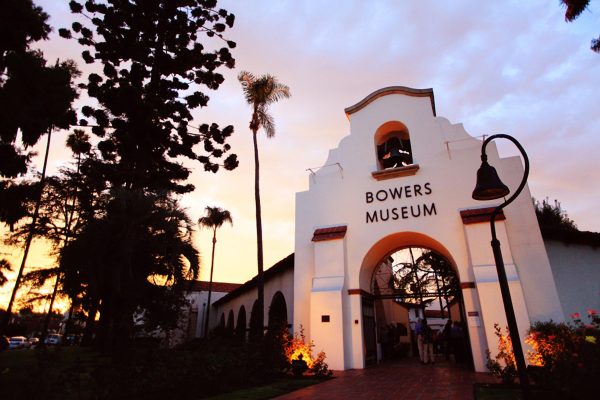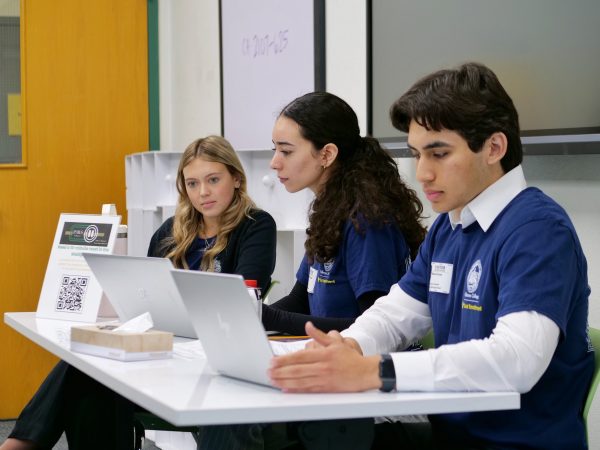‘Celebrando’ Black History Month with Señor Barcenas
Omar Barcenas, Spanish teacher, gives a lesson on important Afro-Latino figures in honor of Black History Month. Barcenas created a unit to celebrate and raise awareness to the achievements of Afro-Latinos in the arts.
Feb. 1 marks the beginning of Black History Month, and the start of a new Afro-Latino unit for Omar Barcenas’ Spanish 2 and 3 classes.
Barcenas, BOHS Spanish teacher, began to emphasize Afro-Latino culture in recent years because he noticed that many of his students haven’t been exposed to Afro-Latino culture. The main objective of this unit is centered around “teach[ing] students about the diversity of the Latino culture,” said Barcenas. “I want to emphasize the importance of our Afro-Latino ancestors that gave the rhythm and flavor in the arts.”
Afro-Latinos are people of both Latin American and African ancestry who currently make up 25% of the Hispanic population in the US. They are usually based in coastal areas of Latin America such as the Dominican Republic, Puerto Rico, Panama, Colombia, and Honduras.
Esther Chung, former Spanish 3 student, acknowledges that “there was so much I didn’t know since I wasn’t taught about Hispanic culture.” She fostered a strong relationship with the culture after understanding what it meant to be Afro-Latino. Now, Chung has “recognized different songs, foods, and people. This Spanish class [unit] really expanded my perspective and it’s exciting to finally understand the different traditions and holidays,” Chung said.
Barcenas finds it easiest to convey the impact that Afro-Latinos had in the creation of different genres of music by “incorporat[ing] music in my classrooms. Spanish music would not be the same without the influence of Afro-Latinos,” Barcenas said.
During the unit, Barcenas will introduce students to Afro-Latino music. Celia Cruz, Aventura, Esperanza Spalding, and Ozuna are just a few of the many Afro-Latino artists who’ve greatly influenced Hispanic culture and will be featured in class.
Barcenas also plans to showcase to his students a video explaining the hardships and beauties of being Afro-Latino. Afterwards, students will be asked to make a project based on important Afro-Latinos and their accomplishments.
Barcenas highlights the successes of significant Afro-Latino figures: from Guardians of the Galaxy actor, Zoe Saldana, to Alexandria Ocasio-Cortez, the popular U.S. representative of Puerto Rican descent, to the Los Angeles Lakers’ Carmelo Anthony. Through his lessons, students are reminded that Afro-Latinos have greatly impacted the world we live in today.
Vice President of Latinx Club, and current AP Spanish scholar, Samantha Hernandez, junior, vividly remembers her project on an Afro-Latino musician last year as it helped her better understand the music she loved reggaeton (a fusion of Jamaican and Latin music originating from Puerto Rico) and bachata (a genre of music and dance from the Dominican Republic)–and the people in her life.
Hernandez studied Myke Towers, a Puerto Rican musician who spoke out against discrimination against Afro-Latinos. “It’s so important for me to know about the artist’s inspirations because there are African roots within every Latin American country and it’s important to recognize and celebrate these roots,” Hernandez said.
Barcenas’ Spanish 2 and 3 students this year can look forward to enhancing their Spanish vocabulary and understanding of Hispanic culture while celebrating Black History Month.
Your donation supports the student journalists at Brea Olinda High School! The contribution will help us purchase equipment, upgrade technology, and cover our annual website hosting costs.
Gabrielle Smith, senior, will attend Howard University this fall.
Alexis Alexander, senior, is one of the Photo Managers on the Wildcat. She has a strong passion for taking photos and telling stories through her pictures....








